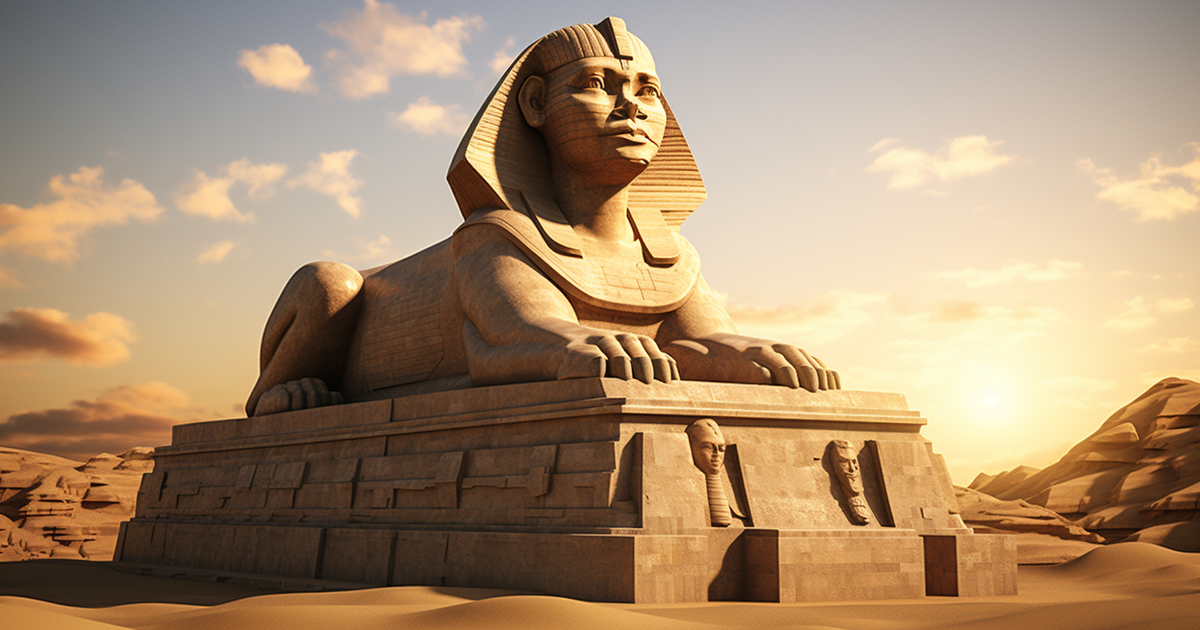Nestled amidst the golden sands of Egypt, the Great Sphinx of Giza stands as a testament to the ingenuity and craftsmanship of the ancient Egyptians. This enigmatic monument, with the head of a man and the body of a lion, has captured the imagination of scholars and travelers alike for centuries. While its primary role as a guardian of pharaohs’ tombs is well-documented, there is much more to this extraordinary structure than meets the eye.
The Great Sphinx is undoubtedly one of the most iconic symbols of ancient Egypt. Carved from a single colossal limestone block, it is an awe-inspiring feat of engineering that has endured the test of time. Its imposing presence, with a length of approximately 73 meters (240 feet) and a height of around 20 meters (66 feet), commands respect and admiration from all who lay eyes upon it.
What makes the Great Sphinx even more intriguing is its peculiar and disproportionate head. The head of the Sphinx is widely believed to represent Pharaoh Khafre, in whose reign it was constructed. However, the distinct disparity in size between the massive body and the comparatively smaller head has led many to question whether it was originally intended to be this way. Some experts propose that the head may have been re-carved or repurposed from an earlier statue, giving rise to numerous theories and speculations.

One theory suggests that the Sphinx’s original purpose might have been far different from its later role as a guardian of royal tombs. Some researchers speculate that it could have served as a celestial marker or an astronomical observatory, aligning with significant celestial events such as solstices and equinoxes. This interpretation adds a layer of mystique to the monument, suggesting that the ancient Egyptians possessed a profound understanding of celestial phenomena and their connection to the earthly realm.
Another fascinating aspect of the Great Sphinx is its ever-elusive nose, which has been missing for centuries. While there are various accounts and legends surrounding the nose’s disappearance, the true story remains shrouded in mystery. Some argue that it was deliberately vandalized during the rule of Muhammad Sa’im al-Dahr in the 14th century, while others propose that it might have fallen victim to natural erosion over time. The missing nose adds an additional layer of intrigue to the Sphinx’s history, leaving us with unanswered questions and room for speculation.
In addition to its puzzling origins and missing nose, the Great Sphinx continues to captivate the imagination of conspiracy theorists and amateur historians alike. Some believe that hidden chambers and tunnels lie beneath the monument, waiting to be discovered, while others propose that it may hold ancient secrets or treasures yet to be unearthed.
In conclusion, the Great Sphinx of Giza stands as a symbol of Egypt’s rich history and cultural heritage. Its imposing presence and enigmatic features have made it a subject of fascination for generations. While we may never fully unlock the mysteries surrounding its creation and purpose, the Sphinx serves as a timeless reminder of the remarkable achievements of ancient civilizations and the enduring allure of the unknown.

21 thoughts on “The Enigmatic Legacy of the Great Sphinx of Giza”
Comments are closed.